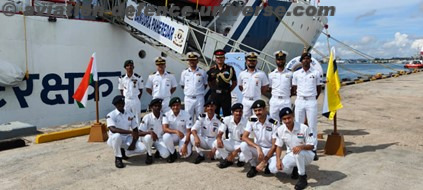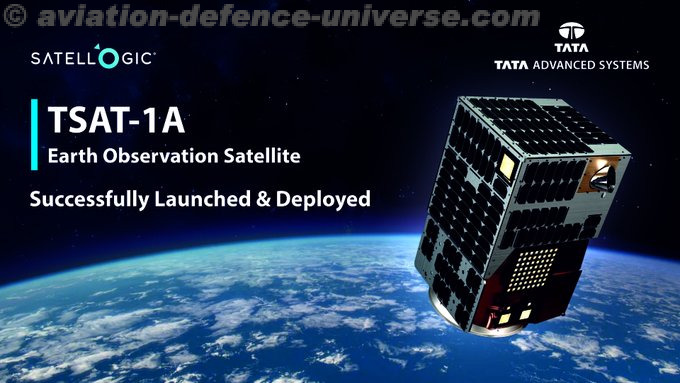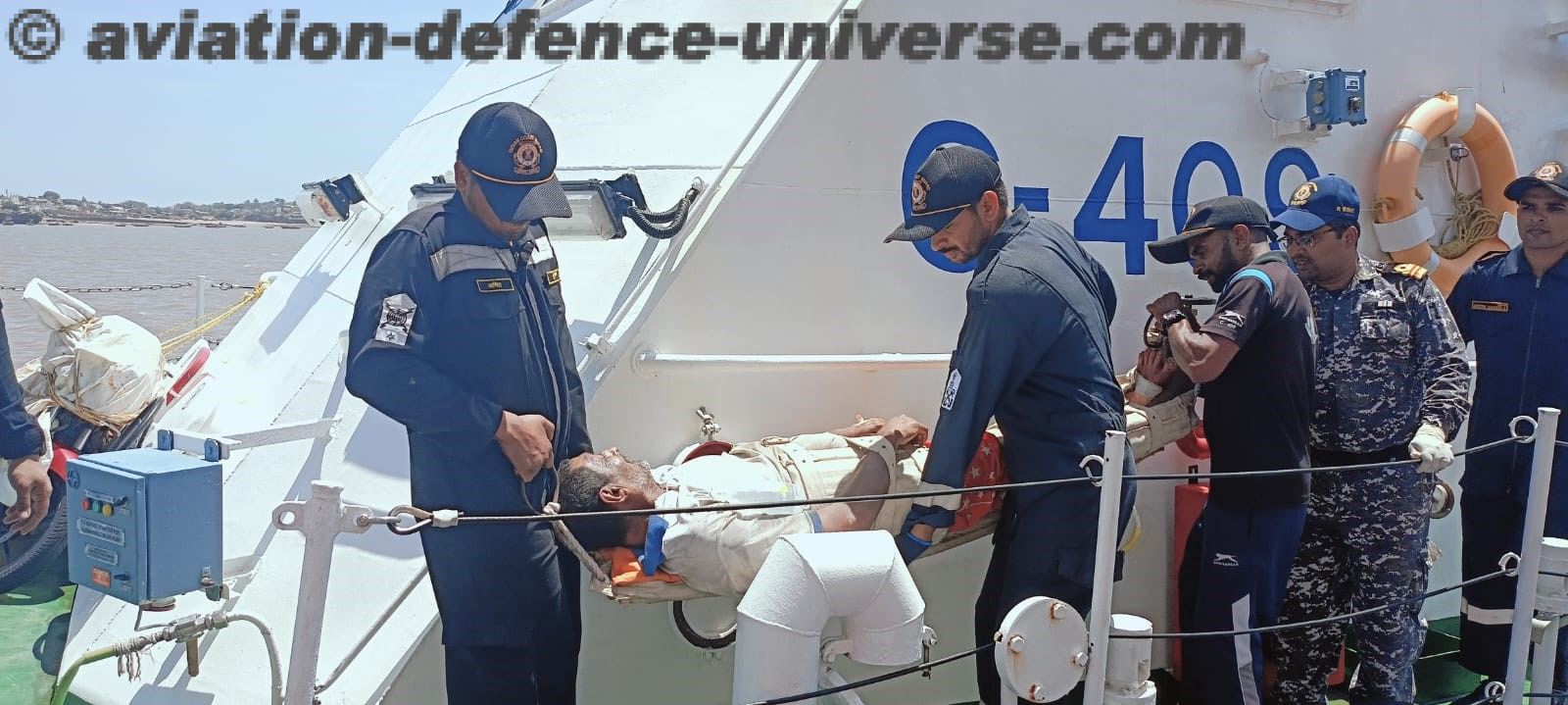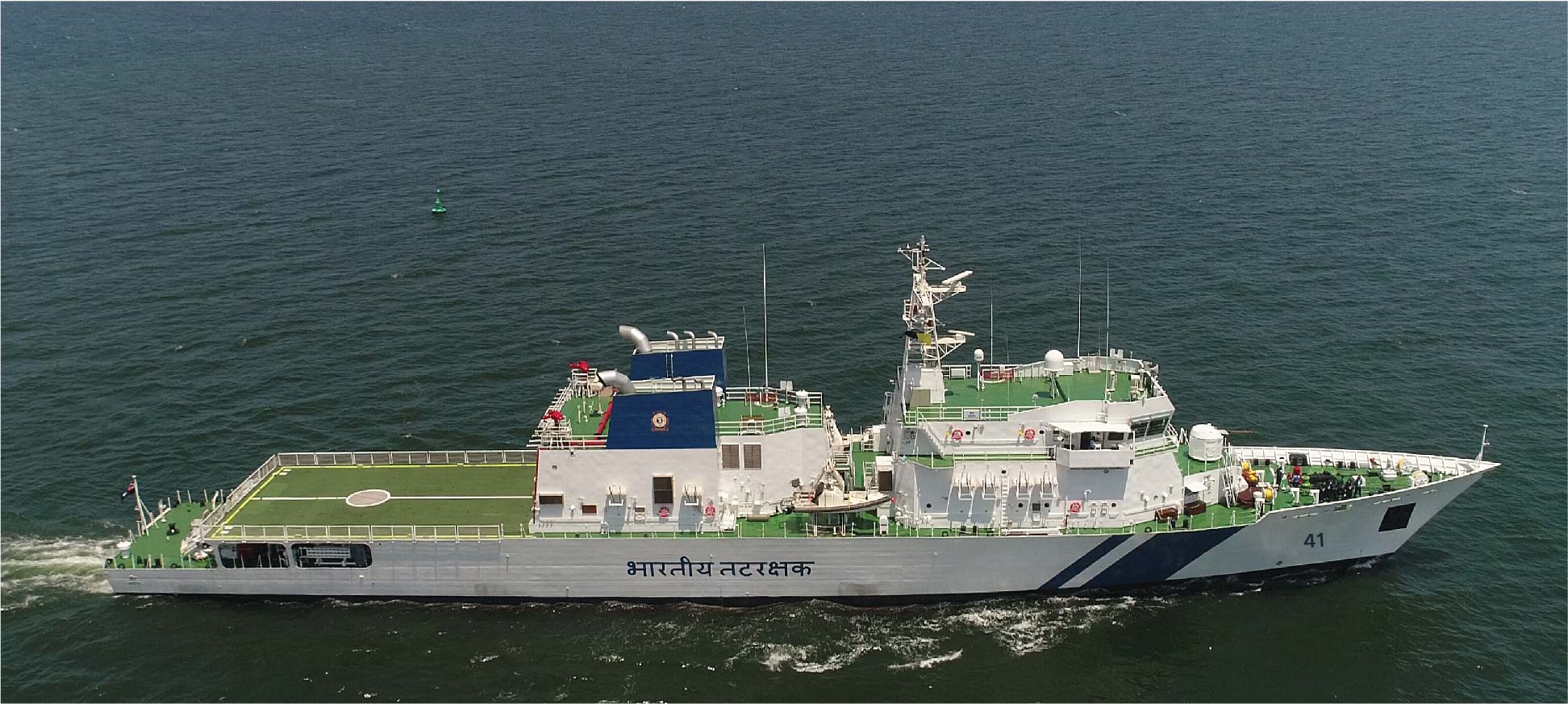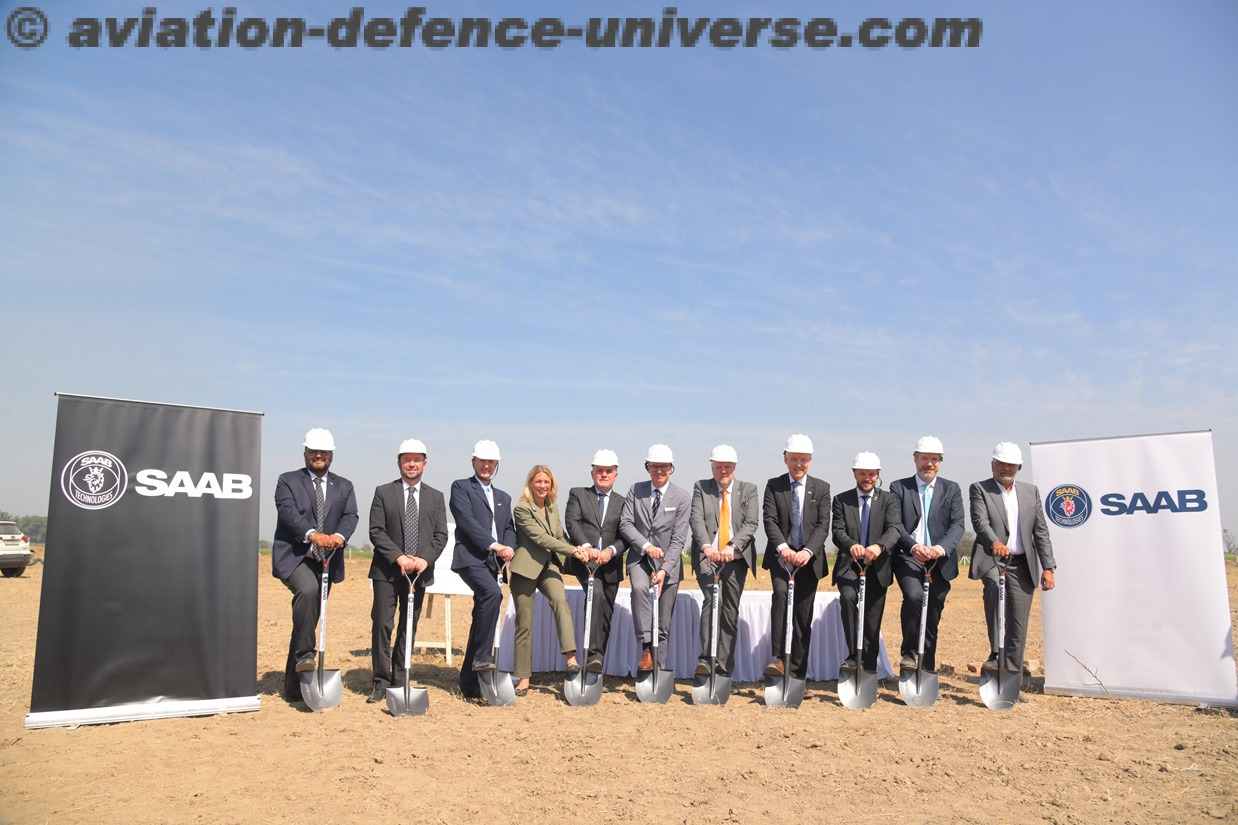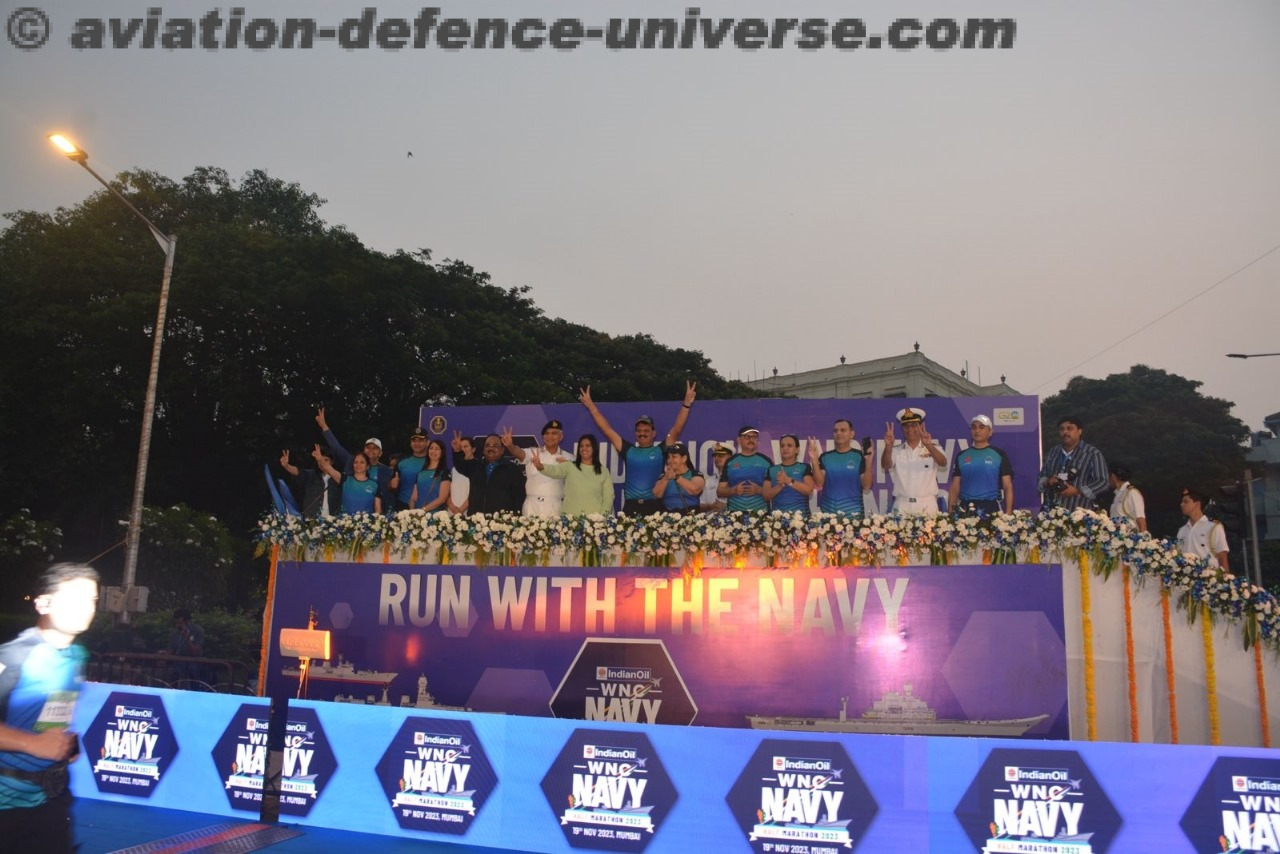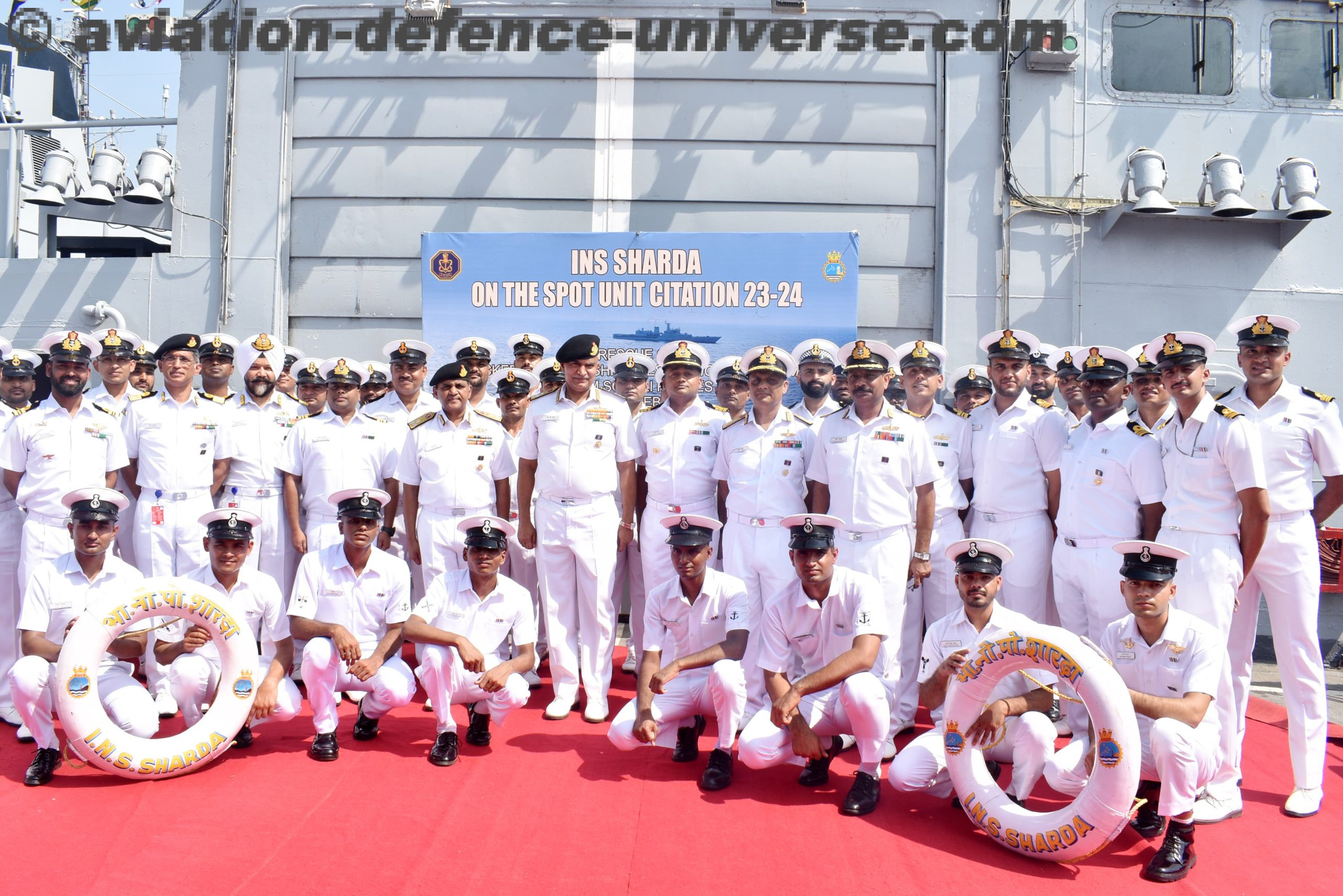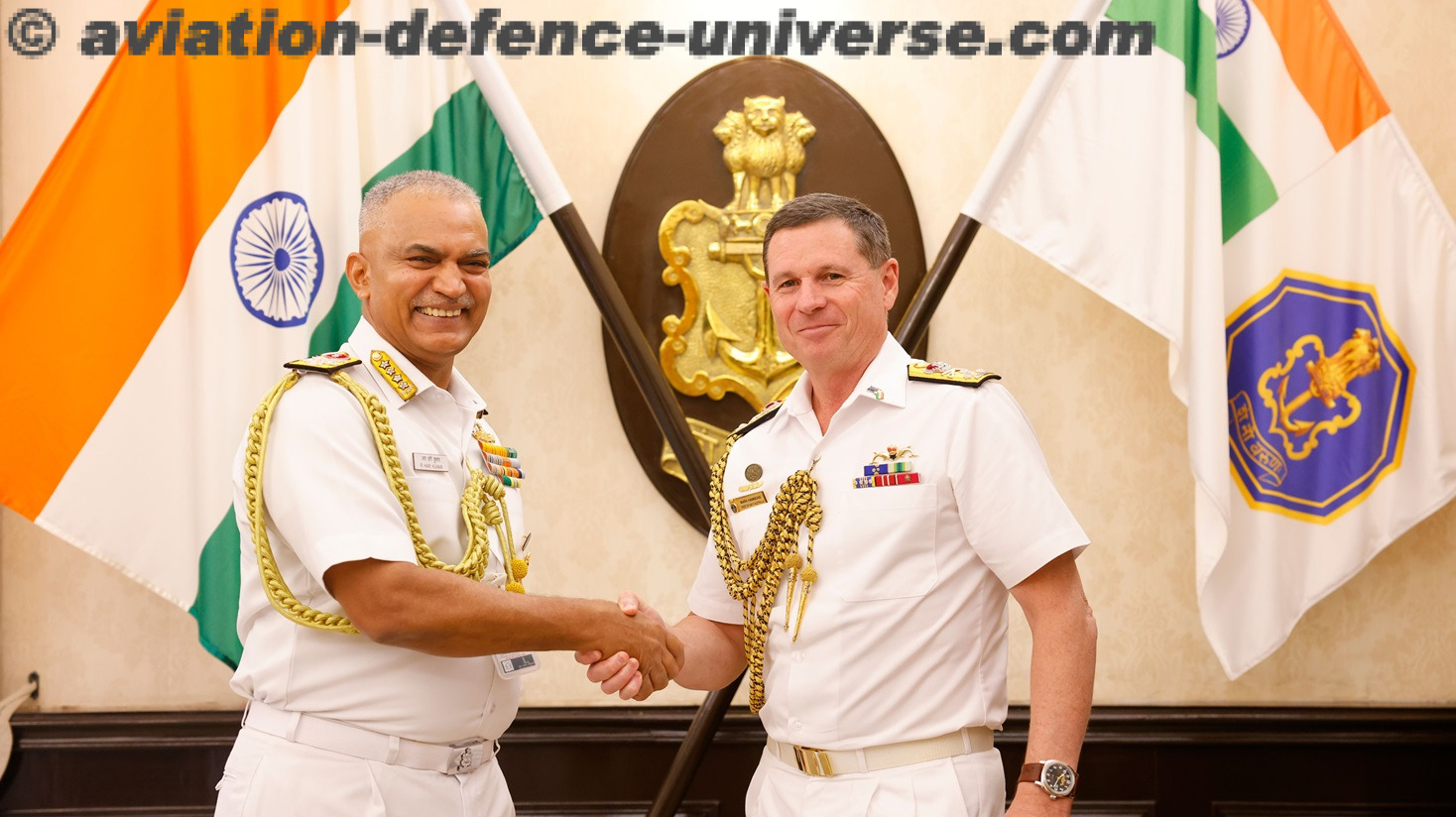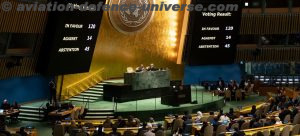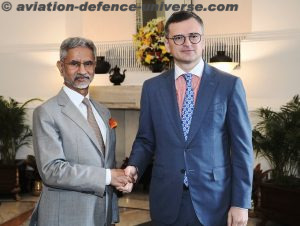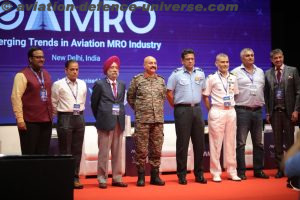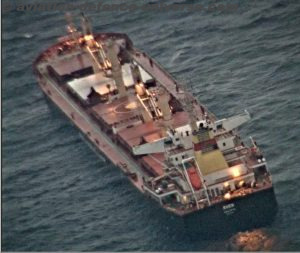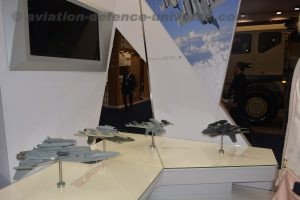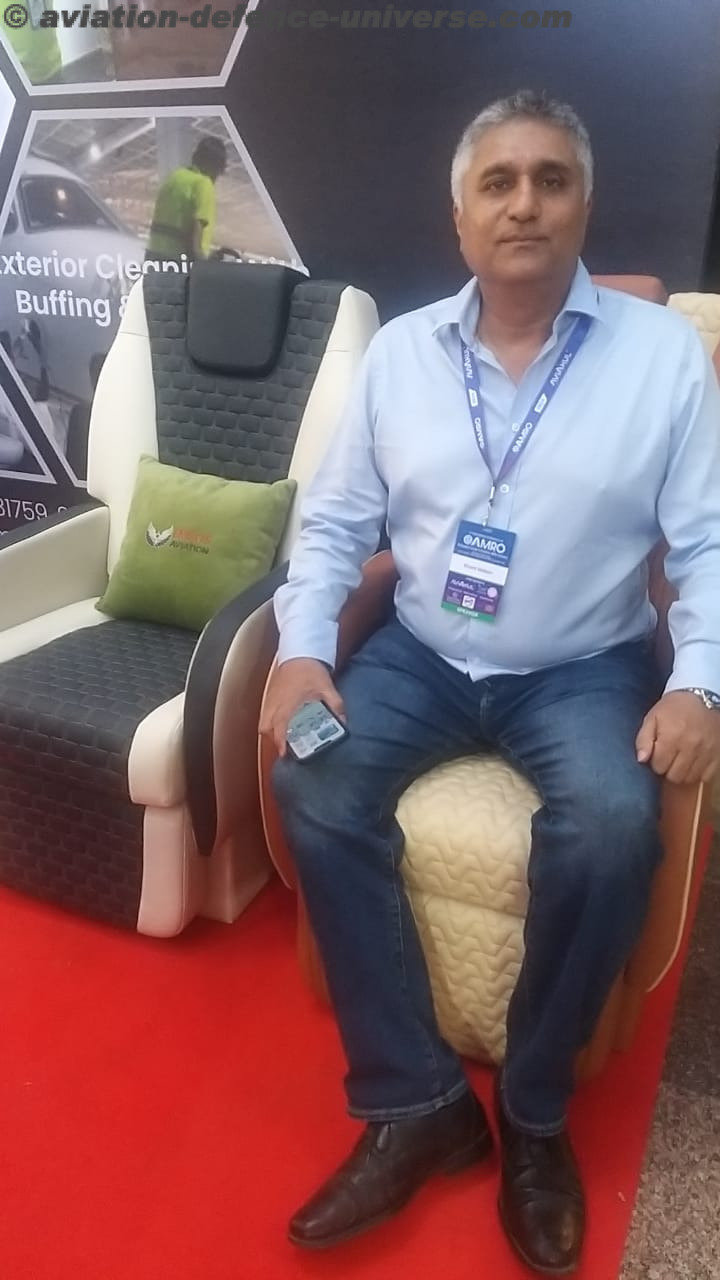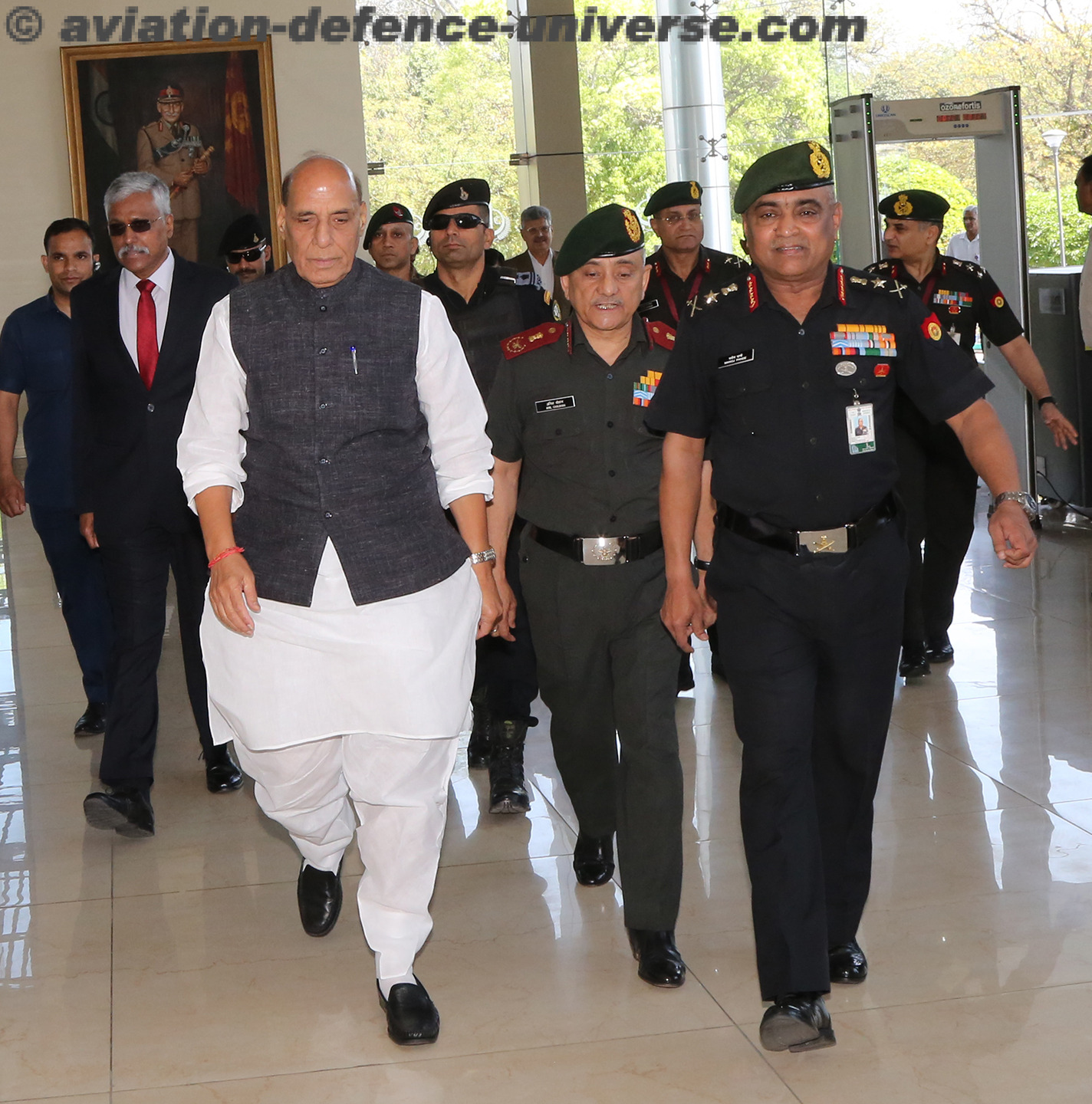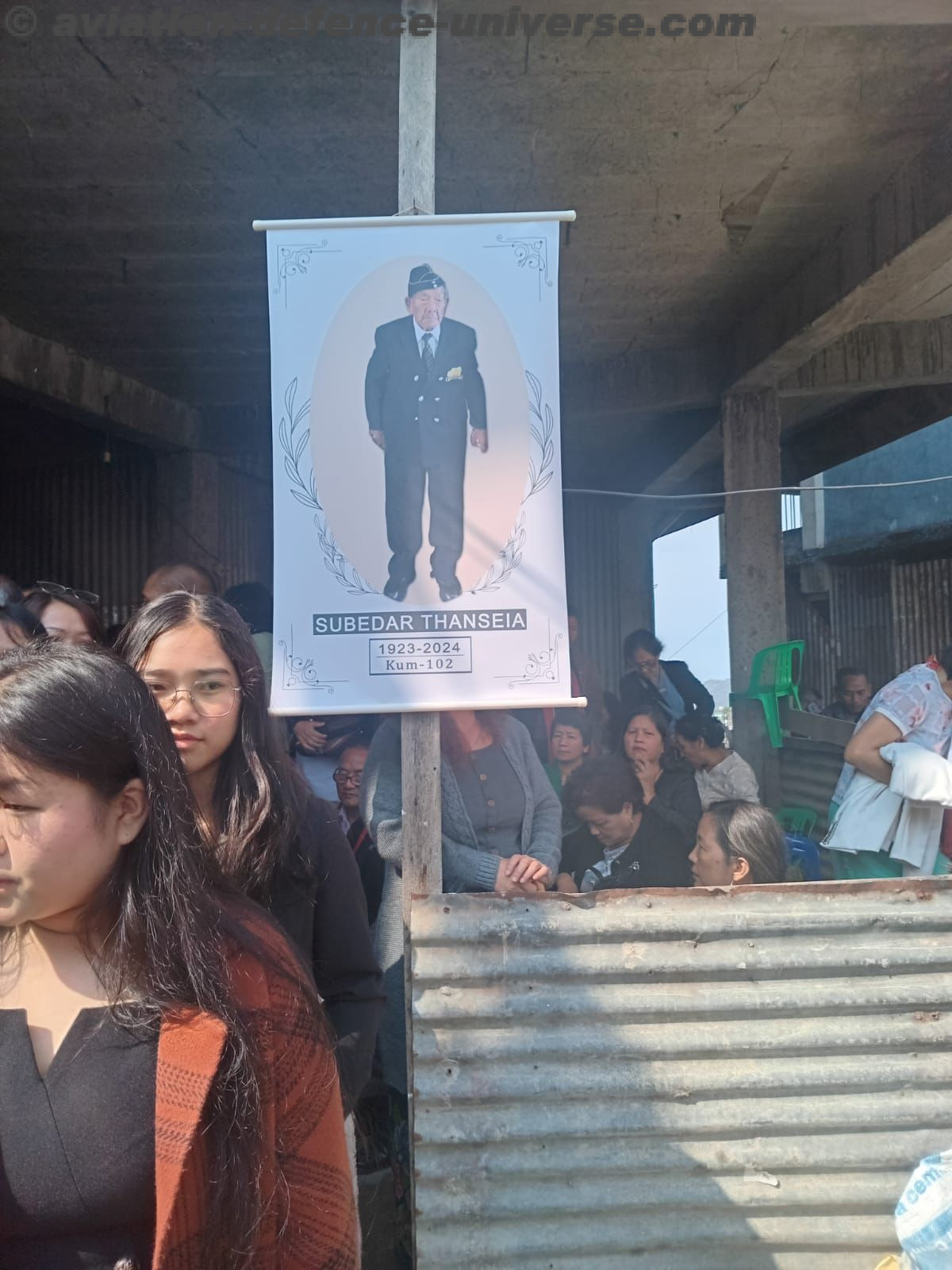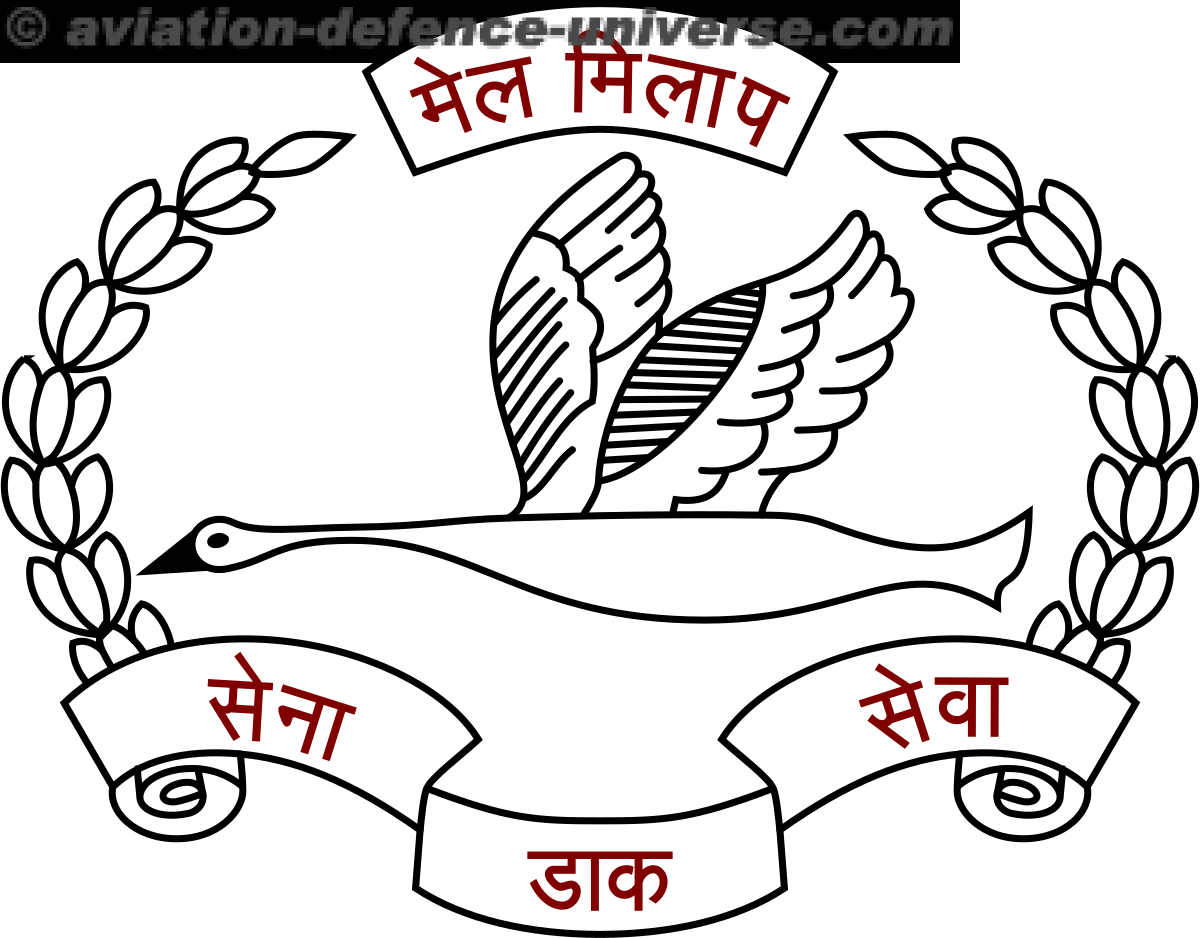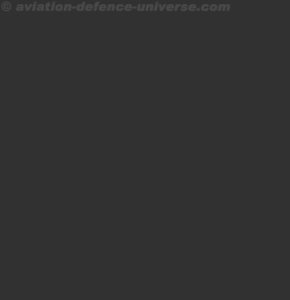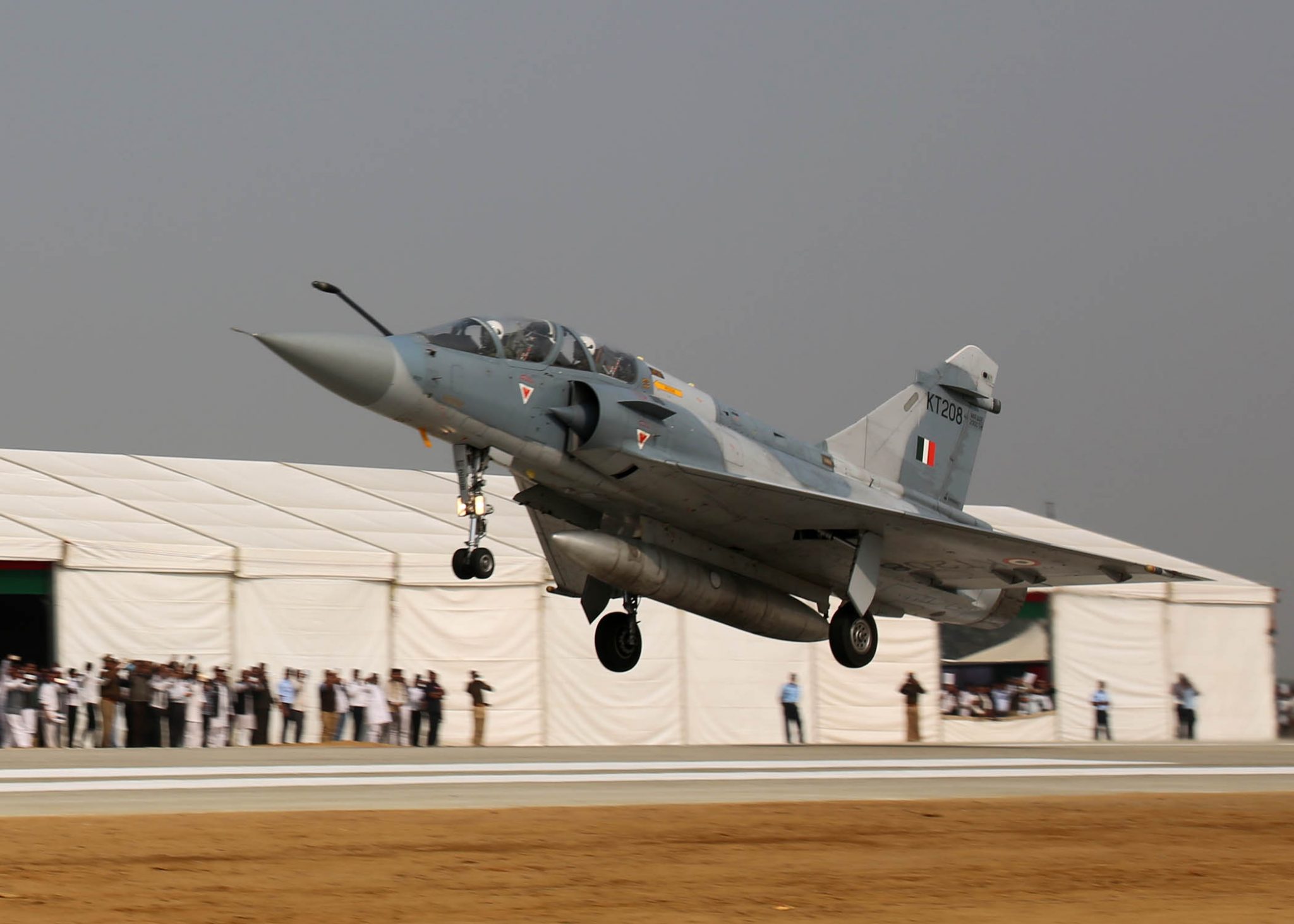By Sangeeta Saxena & Brig. VK Atray
New Delhi. 03 December, 2015. Navy to navy relations with maritime countries at an all time high and the blue print of empowering India through maritime security, self reliance and indigenization, is the mantra of the Indian Navy today. Speaking to the media at the annual press conference to commemorate the Navy Day, Chief of the Naval Staff, Admiral R.K. Dhowan stressed that Indian Navy was both operational and combat ready at all times to take up challenges and act as extended arms of the country. “We are an efficient , taut and happy Navy, which strives for excellence and does not settle for mediocrity,” he added.
Indian Navy’s futuristic planning is decades old and the chief explained that 60 % of the capital budget is being used on future plans and only 40% for revenue. “ Our combat management systems are indigenous and so are the communications and electronic warfare systems. All network centric requirements are also self-made. Indian navy was the first and only Indian force to have its own satellite, Rukmini ,” he said with pride.
On a day the navy was neck deep into helping the Tamil Nadu government in getting the rain-ravaged city of Chennai , the force has deployed a number of ships and tankers besides opening up its base as an alternative airport as part of ‘Operation Madad’, Admiral Dhowan informed that It has also deployed unmanned aerial vehicles (UAV) to identity the worst-hit areas in flooded Chennai to help civilian authorities.
”We used an innovative method, carrying out surveys by UAVs to identify waterlogged areas and sharing the information with the civil administration to help them in rescue work,” he said. Its base at Arakkonam was being used for civilian flights as the Chennai airport was inundated following the worst rains in a century, he said. Dhowan said that INS Rajali, the naval base at Arakkonam, around 60 km from Chennai, was serving as the alternative airport for supplying relief material as well as for bringing in National Disaster Response Force teams.
Admiral Dhowan agreed that man-power shortage in the Navy is there as the force is becoming a bigger and so are its needs for expert and general human capital, to keep it fit. Navy has already started to bridge this gap. 1200 cadets are beinbg trained at the academy in Ezhimala, which used to earlier train 750. At the sailor’s training establishment at Chilka enhancement of infrastructure and manpower is top priority.
He informed that the Indian Navy was looking to create more infrastructure in the Andaman and Nicobar Islands, terming the islands “strategically located. “There will be enhancement in assets and infrastructure, from ports to harbours and air fields. The aim was to ensure that not only the island is well protected but also is a base to operate from, ” he said. The Andaman and Nicobar Islands come under the tri-services command.
Asked about China’s presence in the Indian Ocean, the navy chief said India has been monitoring the Chinese navy’s actions and those of other navies as well. He said China has economic interests as lots of its oil freight moves through this route. Responding to a question on the Chinese Maritime Silk Route concept promulgated by China , the Chief said it will be the government’s decision to join the silk route.
Post 26/11 which was a wakeup call for the Navy, Coast Guard, police, intelligence bodies and the top leadership, IMAC is a big step towards removing the country’s sea blindness, another matter of pride for the force . The Information Management and Analysis Centre (IMAC), jointly operated by the Indian Navy and Coast Guard, is a state-of-the-art naval intelligence network capable of tracking its assets on a real time mode. Besides coastal security, they have to protect the nation’s interests in the Exclusive Economic Zone (EEZ). There should be a change in the mindset to correlate the data that would be available through the massive surveillance network to ensure zero tolerance to error.

The NC3I network links more than fifty Naval and Coast Guard stations, located along the coast and on island territories. The network provides these stations coastal surveillance information obtained from various sensors such as the coastal radar chain of the Indian Coast Guard and automatic tracking systems as well as electro-optical cameras.
At the apex level the National Committee for Strengthening Maritime and Coastal Security (NCSMCS), headed by the Cabinet Secretary, coordinates all matters related to Maritime and Coastal Security. Joint Operations Centres (JOCs), set up by the Navy as command and control hubs for coastal security at Mumbai, Visakhapatnam, Kochi and Port Blair are fully operational. These JOCs are manned 24×7 jointly by the Indian Navy, Indian Coast Guard and Marine Police. Inter–agency coordination, between nearly 15 national and state agencies has improved dramatically, only due to regular “exercises” conducted by the Navy in all the coastal states. Nationwide, over 100 such exercises have been conducted till date since 2008, and this has strengthened coastal security markedly.
In addition to continuous patrolling by Navy and Coast Guard, modern technical measures have also been implemented for coastal surveillance, by way of a chain of 74 Automatic Identification System (AIS) receivers, for gapless cover along the entire coast. This is complemented by a chain of overlapping 46 coastal radars in the coastal areas of our mainland and Islands. A second phase of coastal radars is also being implemented to plug the small gaps in some places.
NC3I collates data about all ships, dhows, fishing boats and all other vessels operating near our coast, from multiple technical sources including the AIS and radar chain. These inputs are fused and analysed at the IMAC . “Issue of ID cards to all fishermen with a single centralised database, registration of over 2 lakh fishing vessels operating off our coast and equipping fishing boats with suitable equipment, to facilitate vessel identification and tracking are some of the other steps taken. Our fishing communities are adept mariners, whose cooperation is indispensible to our maritime security. Fishing communities have become the ‘eyes and ears’ of our security architecture. This has been achieved by spreading awareness in these communities through coastal security awareness campaigns, conducted by the Indian Navy and Coast Guard, in all coastal districts of the country. In the Western Naval Command itself, nearly 70 such campaigns have been conducted in 2014 alone. During these campaigns fishermen have been strongly advised and warned not to cross the International Maritime Boundary as it is in the interest of their safety. Fishermen today own GPS receivers and are therefore fully aware of their positions at sea,” he informed.
The Navy and Coast Guard have also provided periodic maritime training to marine police in all coastal states. In WNC itself over 250 police personnel have been trained in 2014. In order to have a permanent police training facility, Marine Police training institutes in Tamil Nadu and Gujarat have been approved by the Government recently. These will provide the Marine Police better facilities and infrastructure for professional training.
In context of former navy chief Admiral Laxminarayan Ramdas (retd) writing an open letter to President Pranab Mukherjee condemning the attacks on minorities and Dalits under the rule of the current government, the Chief stated, ” The navy is a microcosm of India. We have personnel from every state, every religion. Therefore, navy is totally secular in nature and it starts from our individual and smallest unit. That trend and that feeling, and that spirit is maintained in the navy.”
Asked about the three foundational agreements – CISMOA, BECA and LSA that US wants India to sign for transfer of higher technology, Dhowan said it is being considered “seriously”. The Navy is on the cusp of a whole new era, with steady infrastructure expansion, augmentation of fleet levels and enhanced induction of personnel. The Indian Navy is in the process of a transformation and that comes in largely from the implementation of the maritime capability perspective plan, which is a long-term plan where it has taken into account as to what the Indian Navy of the future will be.
“ When we make this perspective plan, we actually project ourselves 15 years into the future. What will be the environment prevailing in our neighbourhood, in the Indian Ocean region; what will be the technologies that will be available at that point in time; what you really want the Indian Navy of the future to do; what will be the aspects related to threat perceptions at that point in time; what will be India’s state as a maritime nation and how will our maritime interests grow and hence the requirement of the security umbrella which is to be provided by the Indian Navy. State-of-the-art ships, submarines, corvettes, missiles, technology and training will be our hallmark and we promise to make Indian Navy a force to reckon with, ” concluded Admiral Dhowan.






